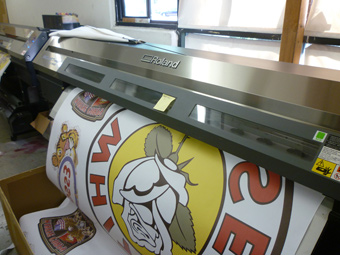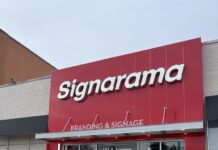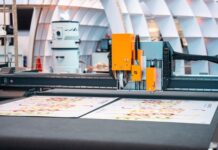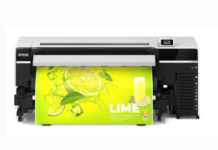The Vintage Sign Company, as the name implies, has built its success by focusing on a highly specialized niche: retro (and retro-looking) signs on metal.
“We sell about 300,000 signs a year,” reports George Cunningham, COO and son of company founder Ian Cunningham (who heads up R&D and business development). “We’re really mimicking the look and quality of ceramic signs.”
The public face of their company can be seen at PastTimeSigns.com, one of the e-commerce sites the company operates. Their clients can order signs from a library of graphics, which evoke the look of yesteryear in everything from advertising to travel in a variety of shapes and sizes.
Consumer orders represent just a fraction of Vintage Sign’s sales. Cunningham reports more than 90 percent of business comes as a wholesale supplier to companies worldwide.
What catches their eye and keeps them coming back is the abundance of choices in sign designs the company offers—something for every taste, style, and setting.
Abundant Choices
Based in Santee, California, Cunningham started Vintage Sign Company in 1988 as a supplier of backlit displays. In 2001, he was approached by the owners of tin signs specialist Desperate Signs to frame some of their most popular products in neon. Later Desperate Signs commissioned the company to silkscreen graphics for its line of vintage thermometers.
When the thermometer business dried up in 2005, Desperate Signs gave the Cunninghams an opportunity to come up with a new product line. Their idea was to build on Desperate’s success in tin signs and offer a line of premium metal signs on thicker steel with higher quality graphics.
“We love the vintage look. That’s our bread and butter, but we’ve got a nice cross section of graphics across all genres and in a variety of styles,” notes Cunningham. “We feature about 12,000 graphics online and have a total of about 20,000 in our library.”
The selection includes images from the extensive public domain catalog maintained by the Library of Congress, licensed works by professional artists, old ads and logos, and original designs by the company’s team of four graphic artists.
While a few regular sellers are printed and kept in stock, in most cases, there’s no sign printed until an order has been placed—key advantages when it comes to digital dye sublimation printing.
“Part of our strength is being able to print only one of a custom-ordered sign,” notes Cunningham. “Our business is 99 percent digital.”
(Note: For sign production, the company relies on a variety of Roland digital print systems. The line-up includes a pair of Roland’s HiFi JetPro II inkjets, three Roland SOLJET PRO4 XR-640s, and a SOLJET PRO4 XR-540.)

From Silkscreen to Digital
According to Cunningham, initially everything produced in their facility was silkscreened; when the graphics for some thermometers became too sophisticated for this technology, they were forced to move into [dye] sublimation. “The quality of graphics we wanted simply wasn’t attainable, and we didn’t have too many choices in the colors we could use,” he explains.
They outsourced that work until they were able to add a dye sub printer to their workflow. “With dye sublimation, we can now run many more colors than we ever could with silkscreening,” says Cunningham. “The graphics are much higher quality, the prints won’t scratch or wash off, and they are UV-resistant.”
Demand grew with their digital capabilities, and the Cunninghams expanded the scope of operations with new printers and upgraded production facilities.
Today Vintage Sign Company operates from its 20,000-square-foot headquarters and employs a staff of forty-two. Half the operation focuses on metal sign fabrication and half on printing and production.
All signs are cut from and printed on 20- or 24-gauge carbon steel, which the company purchases by the roll. The company originally offered signs in three sizes: 5-by-20 inches; 12-by-8 inches; and 16-by-24 inches. In 2012, they invested in the first of two 4-by-10-foot CNC plasma cutting tables.
“[This] allowed us to create new graphics that were not limited to rectangular shapes while not having to inventory these shapes in metal,” says Cunningham. “We now have the ability to stock raw sheet steel and cut out the signs as they’re ordered.”
The metal for the signs is cut to shape, then treated to receive the image. A base coating of white powder is first applied to each blank and then a clear coat of polyester is added. This serves as the carrier that absorbs the ink.
The graphics for all signs are printed on one of their Roland printers, using Roland dye sublimation inks (typically on TITAN or Artisan dye sublimation transfer papers).
The graphics and blank finally meet at the company’s heat press, and the print transfers from the paper to the substrate to create the finished product. “Our size limitations are dictated by the size of our heat presses,” he notes. “Currently our biggest presses are 42-by-58 inches.
“However for special jobs, we’ve been able to modify our presses to accommodate 54-by-70 inches.”

Top Sellers
The most popular signs have featured pin-up girls, military service, or automotive themes. Some are reprints of old images and advertisements; others renditions by artists whose work evokes the style and look of bygone eras.
Interestingly their biggest customers are catalog companies. “Typically their buyers will choose some graphics they want to list and inventory what they are sure will sell,” says Cunningham, “then back order some other graphics and have us print them as they’re ordered.”
For years, Vintage Sign’s single-most popular offering was a simple 5-by-20-inch sign announcing “Man Cave.” Another perennial best-seller: an 18-by-15-inch sign with Clip Art and text advising “Do Your Laundry Here.”
These favorites been surpassed by another sign, which wasn’t possible without the capabilities of the CNC plasma cutting tables. “In 2013, one of our graphic artists had the idea of taking a sign shaped like the United States and filling it with the license plates for each state,” says Cunningham. “This has really taken off.”
As extensive as the catalog is, the company continues to add new graphics. “We’re currently licensing the work of fifty-five artists, some for an up-front fee, some on a royalty basis per sign,” he says. “We can give our customers so many choices, because the cost of listing a product on our Web site is minimal.
“With digital, we don’t have much invested until an order is placed and the sign is printed.”
As a business partner, the company can market a client’s art or produce their signs. “A company with a military catalog might decide there’s enough interest in some military division from World War II to offer a sign,” he says as an example. “We’ll work with them to get the right insignia, finalize the design, and then put out the graphics, which can be ordered as a metal sign.”
For a company focused on the past, the future of Vintage Sign Company looks bright.
“We’ve got a strong foothold in that we can do everything in-house and offer our customers a range of graphics in sizes and shapes they aren’t going to find anywhere else,” says Cunningham.
By Mike Antoniak
All photos: The Vintage Sign Company











